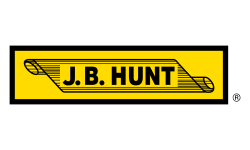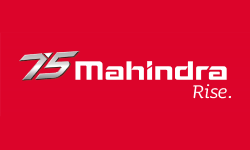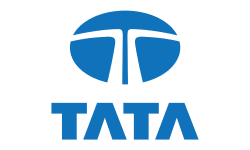
Global Armored Vehicle Market by Product (Defense, Commercial) and Region (North America, Latin America, Europe, Asia Pacific and Middle East & Africa), Forecast To 2028
Industry Insights
Global armored vehicle sales were valued at USD 25.5 Billion in 2018. It is projected to grow by 5.4% between 2019 and 2025. Due to increased emphasis on protecting soldiers from internal and external threats, the market has seen significant growth. Over the forecast period, there will be a rise in awareness of commercial security and increased demand for armored vehicles.
Market growth is expected to be aided by multilateral cooperation between countries like the North Atlantic Treaty Organization and the African Union in order to combat terrorism and keep peace. Market growth is expected to be driven by different governments investing in the most modern machinery to combat militant attacks and insurgencies. Market demand will also be driven by rising communal riots in the Middle East, Africa, and Asia Pacific.
Market growth will be boosted by an increase in defense budgets, especially in Asia Pacific. Contract allotments will be influenced by the goodwill of industry players. Over the next few years, the market will be driven by technological advances such as improved fuel efficiency and the use of high-tech sensor technology.
Asymmetric warfare is a result of increasing cross-border criminal activity and terrorist acts. This will increase product demand. The development of lightweight, compact, high-efficiency, and highly efficient armored vehicles that can be used for defense operations will also help to boost growth prospects.
The industry's growth may be limited by the budget available for military spending in North America and Europe. The market will be affected by rising prices for raw materials, components, vehicle assembly and machining equipment.
Product Insights
The armored vehicle market can be divided into two segments based on product: defense and commercial. The defense armored vehicles segment includes the armored personnel vehicle (APC), armored fighting vehicle (IFV), light-protected vehicle (LPV), main battle tanks (MBT), mine resistant ambush protected(MRAP) and tactical vehicle. The commercial segment includes bus/vans, limousines, sedans, and SUV.
Over the next few years, there will be a growing demand for ambush-resistant automobiles that can protect military personnel against mine attacks. Tactical military vehicles are intended for military forces. For safer deployment of infantry on battlefields and high-risk areas, armored personnel carriers can be used.
Application Insights
The market can be divided into two segments based on its application: defense and commercial. In 2018, the market was worth USD 20.5 billion. The defense segment is expected to grow in the future due to growing concerns about the safety of soldiers during civil wars,riots or domestic terrorism.
The commercial applications of armored cars include VIP protection, armed convoys and patrols. The forecast period will see a rise in demand for protected van rental and leasing services. This is due to increased awareness about personal safety. Due to rising crime rates in countries, banks and organizations are choosing to rent or lease protected vans or trucks to transport valuables, move money from ATMs to banks, and to transfer cash collected at large commercial enterprises to banks.
Regional Insights
In 2018, Asia Pacific accounted for the largest share of revenue, with USD 7.9 billion. This is due to government initiatives to increase military power in countering internal and external terrorist attacks. Several government agencies are investing large amounts in the development of the defense sector throughout the region.
Countries like India, South Korea and China have made investments in advanced armored vehicle development and procurement. These factors will drive the market over the forecast period. South Korea, for example, announced in February 2018 that it would establish a research centre to develop navigation algorithms for unmanned armored vehicle and AI-based smart object detection and tracking technology.
Asia Pacific manufacturers are investing heavily in research and development to create advanced, hybrid armored vehicles that can be used for maritime and border patrolling. In the coming years, regional growth will be boosted by rising military expenditures and a growing demand for light armored vehicles of medium size for patrolling operations.
Market Share in Armored Vehicles
The market's key players include BAE Systems, BMW AG, Daimler AG, (Mercedes Benz); Elbit Systems, Ford Motor Company, General Dynamics Corporation, INKAS Armored Vehicle Manufacturing, International Armored Group, IVECO; Krauss-Maffei Wegmann GmbH & Co.(KMW); Lenco Industries, Inc., Lockheed Martin Corporation, Navistar, Inc., Oshkosh Defense, LLC, Rheinmetall AG, STAT, Inc., Inc.
To gain a competitive edge, these players have made investments in product development. Rheinmetall AG spent USD 242.28 millions in 2014 for research and development. In May 2015, Rheinmetall AG, PolskaGrupaZbrojeniowa SA, Obrum, the company's subsidiary, signed a cooperative agreement to develop new amphibious 6X6 armed automobile for the Polish military.
BAE Systems installed an active damping system upgrade for the CV90 combat vehicle in April 2015. This increased agility and reduced pitch acceleration of approximately 40% allowed the automobile to be more agile. The company also announced in December 2014 that it had been awarded a USD 1.2 billion contract by the U.S. army to manufacture armored multi-purpose vehicles.
Major players are focusing on collaboration with companies involved in the manufacturing of advanced components and systems to equip their products for greater combat capability. Elbit Systems is a major component manufacturer and offers upgrades to components such as fire control systems, autonomous system, and Overhead Remote Controlled War Stations (ORCWS). This will improve security.
The Report Covers Certain Segments
This report predicts revenue growth at the global, regional and country level and offers an analysis of industry trends in each sub-segment from 2014 to 2025. Grand View Research has divided the global armored vehicles market report by application, product, region.
-
Application Outlook (Volume of Thousand Units; Revenue USD Million, 2014-2025)
-
Defense
-
Commercial
-
-
Product Outlook (Volume of Thousand Units; Revenue USD Million, 2014-2025)
-
Defense
-
Armored Personnel Carrier
-
Infantry Fighting Vehicles (IFV).
-
Light Protected Vehicles
-
Main Battle Tanks (MBT).
-
Protected from Mine-resistant Ambush (MRAP).
-
Tactical Vehicle
-
Other
-
-
Commercial
-
Bus/Van
-
Limousine
-
Sedan
-
SUV
-
Other
-
-
-
Regional Outlook (Volume of Thousand Units; Revenue USD Million, 2014-2025)
-
North America
-
The U.S.
-
Canada
-
-
Europe
-
Russia
-
The U.K.
-
-
Asia Pacific
-
China
-
India
-
Japan
-
-
Latin America
-
Brazil
-
-
Middle East & Africa (MEA)
-
Up Market Research published a new report titled “Armored Vehicle Market research report which is segmented by Product (Defense, Commercial), By Players/Companies Inc; Oshkosh Defense, Inc; and Thales Group, Inc; Textron, Inc; Lockheed Martin Corporation; Navistar, LLC; Rheinmetall AG; STAT, BAE Systems; BMW AG; Daimler AG (Mercedes Benz); Elbit Systems; Ford Motor Company; General Dynamics Corporation; INKAS Armored Vehicle Manufacturing; International Armored Group; IVECO; Krauss-Maffei Wegmann GmbH & Co (KMW); Lenco Industries”. As per the study the market is expected to grow at a CAGR of XX% in the forecast period.
Report Scope
| Report Attributes | Report Details |
| Report Title | Armored Vehicle Market Research Report |
| By Product | Defense, Commercial |
| By Companies | Inc; Oshkosh Defense, Inc; and Thales Group, Inc; Textron, Inc; Lockheed Martin Corporation; Navistar, LLC; Rheinmetall AG; STAT, BAE Systems; BMW AG; Daimler AG (Mercedes Benz); Elbit Systems; Ford Motor Company; General Dynamics Corporation; INKAS Armored Vehicle Manufacturing; International Armored Group; IVECO; Krauss-Maffei Wegmann GmbH & Co (KMW); Lenco Industries |
| Regions Covered | North America, Europe, APAC, Latin America, MEA |
| Base Year | 2020 |
| Historical Year | 2018 to 2019 (Data from 2010 can be provided as per availability) |
| Forecast Year | 2028 |
| Number of Pages | 205 |
| Number of Tables & Figures | 144 |
| Customization Available | Yes, the report can be customized as per your need. |
The report covers comprehensive data on emerging trends, market drivers, growth opportunities, and restraints that can change the market dynamics of the industry. It provides an in-depth analysis of the market segments which include products, applications, and competitor analysis.

Global Armored Vehicle Market Report Segments:
The market is segmented by Product (Defense, Commercial).
Armored Vehicle Market research report delivers a close watch on leading competitors with strategic analysis, micro and macro market trend and scenarios, pricing analysis and a holistic overview of the market situations in the forecast period. It is a professional and a detailed report focusing on primary and secondary drivers, market share, leading segments and geographical analysis. Further, key players, major collaborations, merger & acquisitions along with trending innovation and business policies are reviewed in the report.
Key Benefits for Industry Participants & Stakeholders:
- Industry drivers, restraints, and opportunities covered in the study
- Neutral perspective on the market performance
- Recent industry trends and developments
- Competitive landscape & strategies of key players
- Potential & niche segments and regions exhibiting promising growth covered
- Historical, current, and projected market size, in terms of value
- In-depth analysis of the Armored Vehicle Market
Overview of the regional outlook of the Armored Vehicle Market:
Based on region, the market is segmented into North America, Europe, Asia Pacific, Latin America and Middle East & Africa (MEA). North America region is further bifurcated into countries such as U.S., and Canada. The Europe region is further categorized into U.K., France, Germany, Italy, Spain, Russia, and Rest of Europe. Asia Pacific is further segmented into China, Japan, South Korea, India, Australia, South East Asia, and Rest of Asia Pacific. Latin America region is further segmented into Brazil, Mexico, and Rest of Latin America, and the MEA region is further divided into GCC, Turkey, South Africa, and Rest of MEA.

Highlights of The Armored Vehicle Market Report:
- The market structure and projections for the coming years.
- Drivers, restraints, opportunities, and current trends of Armored Vehicle Market.
- Historical data and forecast.
- Estimations for the forecast period 2028.
- Developments and trends in the market.
1. Defense
2. Commercial
- Market scenario by region, sub-region, and country.
- Market share of the market players, company profiles, product specifications, SWOT analysis, and competitive landscape.
- Analysis regarding upstream raw materials, downstream demand, and current market dynamics.
- Government Policies, Macro & Micro economic factors are also included in the report.
We have studied the Armored Vehicle Market in 360 degrees via. both primary & secondary research methodologies. This helped us in building an understanding of the current market dynamics, supply-demand gap, pricing trends, product preferences, consumer patterns & so on. The findings were further validated through primary research with industry experts & opinion leaders across countries. The data is further compiled & validated through various market estimation & data validation methodologies. Further, we also have our in-house data forecasting model to predict market growth up to 2028.
How you may use our products:
- Correctly Positioning New Products
- Market Entry Strategies
- Business Expansion Strategies
- Consumer Insights
- Understanding Competition Scenario
- Product & Brand Management
- Channel & Customer Management
- Identifying Appropriate Advertising Appeals

Reasons to Purchase the Armored Vehicle Market Report:
- The report includes a plethora of information such as market dynamics scenario and opportunities during the forecast period
- Segments and sub-segments include quantitative, qualitative, value (USD Million,) and volume (Units Million) data.
- Regional, sub-regional, and country level data includes the demand and supply forces along with their influence on the market.
- The competitive landscape comprises share of key players, new developments, and strategies in the last three years.
- Comprehensive companies offering products, relevant financial information, recent developments, SWOT analysis, and strategies by these players.
Chapter 2 Assumptions and Acronyms Used
Chapter 3 Research Methodology
Chapter 4 Armored Vehicle Market Overview
4.1 Introduction
4.1.1 Market Taxonomy
4.1.2 Market Definition
4.1.3 Macro-Economic Factors Impacting the Market Growth
4.2 Armored Vehicle Market Dynamics
4.2.1 Market Drivers
4.2.2 Market Restraints
4.2.3 Market Opportunity
4.3 Armored Vehicle Market - Supply Chain Analysis
4.3.1 List of Key Suppliers
4.3.2 List of Key Distributors
4.3.3 List of Key Consumers
4.4 Key Forces Shaping the Armored Vehicle Market
4.4.1 Bargaining Power of Suppliers
4.4.2 Bargaining Power of Buyers
4.4.3 Threat of Substitution
4.4.4 Threat of New Entrants
4.4.5 Competitive Rivalry
4.5 Global Armored Vehicle Market Size & Forecast, 2018-2028
4.5.1 Armored Vehicle Market Size and Y-o-Y Growth
4.5.2 Armored Vehicle Market Absolute $ Opportunity
Chapter 5 Global Armored Vehicle Market Analysis and Forecast by Product
5.1 Introduction
5.1.1 Key Market Trends & Growth Opportunities by Product
5.1.2 Basis Point Share (BPS) Analysis by Product
5.1.3 Absolute $ Opportunity Assessment by Product
5.2 Armored Vehicle Market Size Forecast by Product
5.2.1 Defense
5.2.2 Commercial
5.3 Market Attractiveness Analysis by Product
Chapter 6 Global Armored Vehicle Market Analysis and Forecast by Region
6.1 Introduction
6.1.1 Key Market Trends & Growth Opportunities by Region
6.1.2 Basis Point Share (BPS) Analysis by Region
6.1.3 Absolute $ Opportunity Assessment by Region
6.2 Armored Vehicle Market Size Forecast by Region
6.2.1 North America
6.2.2 Europe
6.2.3 Asia Pacific
6.2.4 Latin America
6.2.5 Middle East & Africa (MEA)
6.3 Market Attractiveness Analysis by Region
Chapter 7 Coronavirus Disease (COVID-19) Impact
7.1 Introduction
7.2 Current & Future Impact Analysis
7.3 Economic Impact Analysis
7.4 Government Policies
7.5 Investment Scenario
Chapter 8 North America Armored Vehicle Analysis and Forecast
8.1 Introduction
8.2 North America Armored Vehicle Market Size Forecast by Country
8.2.1 U.S.
8.2.2 Canada
8.3 Basis Point Share (BPS) Analysis by Country
8.4 Absolute $ Opportunity Assessment by Country
8.5 Market Attractiveness Analysis by Country
8.6 North America Armored Vehicle Market Size Forecast by Product
8.6.1 Defense
8.6.2 Commercial
8.7 Basis Point Share (BPS) Analysis by Product
8.8 Absolute $ Opportunity Assessment by Product
8.9 Market Attractiveness Analysis by Product
Chapter 9 Europe Armored Vehicle Analysis and Forecast
9.1 Introduction
9.2 Europe Armored Vehicle Market Size Forecast by Country
9.2.1 Germany
9.2.2 France
9.2.3 Italy
9.2.4 U.K.
9.2.5 Spain
9.2.6 Russia
9.2.7 Rest of Europe
9.3 Basis Point Share (BPS) Analysis by Country
9.4 Absolute $ Opportunity Assessment by Country
9.5 Market Attractiveness Analysis by Country
9.6 Europe Armored Vehicle Market Size Forecast by Product
9.6.1 Defense
9.6.2 Commercial
9.7 Basis Point Share (BPS) Analysis by Product
9.8 Absolute $ Opportunity Assessment by Product
9.9 Market Attractiveness Analysis by Product
Chapter 10 Asia Pacific Armored Vehicle Analysis and Forecast
10.1 Introduction
10.2 Asia Pacific Armored Vehicle Market Size Forecast by Country
10.2.1 China
10.2.2 Japan
10.2.3 South Korea
10.2.4 India
10.2.5 Australia
10.2.6 South East Asia (SEA)
10.2.7 Rest of Asia Pacific (APAC)
10.3 Basis Point Share (BPS) Analysis by Country
10.4 Absolute $ Opportunity Assessment by Country
10.5 Market Attractiveness Analysis by Country
10.6 Asia Pacific Armored Vehicle Market Size Forecast by Product
10.6.1 Defense
10.6.2 Commercial
10.7 Basis Point Share (BPS) Analysis by Product
10.8 Absolute $ Opportunity Assessment by Product
10.9 Market Attractiveness Analysis by Product
Chapter 11 Latin America Armored Vehicle Analysis and Forecast
11.1 Introduction
11.2 Latin America Armored Vehicle Market Size Forecast by Country
11.2.1 Brazil
11.2.2 Mexico
11.2.3 Rest of Latin America (LATAM)
11.3 Basis Point Share (BPS) Analysis by Country
11.4 Absolute $ Opportunity Assessment by Country
11.5 Market Attractiveness Analysis by Country
11.6 Latin America Armored Vehicle Market Size Forecast by Product
11.6.1 Defense
11.6.2 Commercial
11.7 Basis Point Share (BPS) Analysis by Product
11.8 Absolute $ Opportunity Assessment by Product
11.9 Market Attractiveness Analysis by Product
Chapter 12 Middle East & Africa (MEA) Armored Vehicle Analysis and Forecast
12.1 Introduction
12.2 Middle East & Africa (MEA) Armored Vehicle Market Size Forecast by Country
12.2.1 Saudi Arabia
12.2.2 South Africa
12.2.3 UAE
12.2.4 Rest of Middle East & Africa (MEA)
12.3 Basis Point Share (BPS) Analysis by Country
12.4 Absolute $ Opportunity Assessment by Country
12.5 Market Attractiveness Analysis by Country
12.6 Middle East & Africa (MEA) Armored Vehicle Market Size Forecast by Product
12.6.1 Defense
12.6.2 Commercial
12.7 Basis Point Share (BPS) Analysis by Product
12.8 Absolute $ Opportunity Assessment by Product
12.9 Market Attractiveness Analysis by Product
Chapter 13 Competition Landscape
13.1 Armored Vehicle Market: Competitive Dashboard
13.2 Global Armored Vehicle Market: Market Share Analysis, 2019
13.3 Company Profiles (Details – Overview, Financials, Developments, Strategy)
13.3.1 Inc; Oshkosh Defense
13.3.2 Inc; and Thales Group
13.3.3 Inc; Textron
13.3.4 Inc; Lockheed Martin Corporation; Navistar
13.3.5 LLC; Rheinmetall AG; STAT
13.3.6 BAE Systems; BMW AG; Daimler AG (Mercedes Benz); Elbit Systems; Ford Motor Company; General Dynamics Corporation; INKAS Armored Vehicle Manufacturing; International Armored Group; IVECO; Krauss-Maffei Wegmann GmbH & Co (KMW); Lenco Industries
The global Armored Vehicle market has been segmented based on
By Product
- Defense
- Commercial
- Asia Pacific
- North America
- Latin America
- Europe
- Middle East & Africa
- Inc; Oshkosh Defense
- Inc; and Thales Group
- Inc; Textron
- Inc; Lockheed Martin Corporation; Navistar
- LLC; Rheinmetall AG; STAT
- BAE Systems; BMW AG; Daimler AG (Mercedes Benz); Elbit Systems; Ford Motor Company; General Dynamics Corporation; INKAS Armored Vehicle Manufacturing; International Armored Group; IVECO; Krauss-Maffei Wegmann GmbH & Co (KMW); Lenco Industries
Related Reports
Some other reports from this category!




















